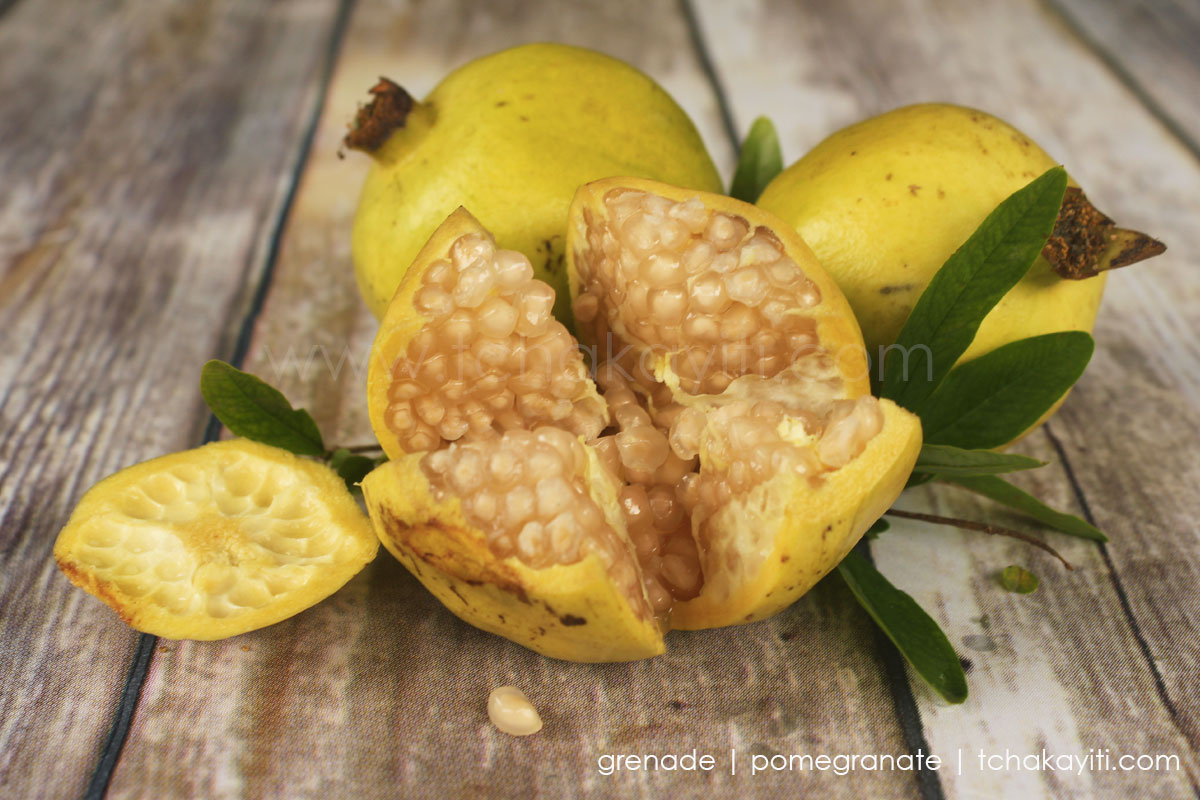Today, we’re going back in time to a Sunday morning 20 something years ago. It’s about 9 or 10 am. My family just had breakfast. We’re sitting in the living room, glued to the TV screen. Laughter fills the house. We’re watching our favorite Haitian comedian of the time.
TNH, Haiti’s National Television, is airing Languichatte.
Languichatte is part of our Sunday ritual. No one can take us away from the screen when his skits are on. We cannot and will not miss one second of that show. We enjoy it that much.
Yet, my sister and I cannot wait for the commercial break.
Friday afternoon, we had handpicked pomegranates from the tree in front of our grandmother’s house. The time had finally come to savor them. And for some reason, we had chosen to eat them at show time, during the breaks of course.
As soon as the first ad comes on, we rush outside to the terrace. Filled with excitement, we challenge each other to eat as much of the pomegranate as possible before the end of the break. The faster we eat, the more chance we have of getting our hands on a second or third fruit.
Being the youngest, I know I am at a disadvantage. I want a second fruit, but I do not want to lose any seeds in the rush either. They are simply too sweet and juicy for me to waste them.
Using my tiny child fingers, I try my best to remove the inner membrane that separates pomegranate seeds from one another without dropping them. Unfortunately, being the clumsy 8 year-old that I am, I lose many seeds, to my despair.
Yet, at the second break, I don’t give up. There is just something about rushing outside and savoring those fruits that makes the challenge worth it for me…
Today, I couldn’t tell you whether the above story is that of one Sunday or of many Sundays. All I know is, as far as I can remember, I have always linked the two: Languichatte and pomegranates. In my mind, one doesn’t exist without the other.
A perfect Languichatte Sunday is sweetened with pomegranates. That’s just how it works.
And there’s no way I can verify that my memory is accurate. Perhaps, I would have to watch episodes of Languichatte with and without pomegranates to check. Unfortunately, that won’t be possible.
Things have changed a lot since then. Languichatte is no longer aired. And we no longer have access to the pomegranate tree from my childhood. I couldn’t even tell you whether it is still standing or not.
If I were to relive that experience, I would probably have to buy my pomegranates from the grocery store. And that in itself would be a new experience.
Globally, pomegranates seem to be different, the commercialized ones that is. They’re bigger and of a totally different shade from the ones I grew up eating. They’re red-purple.
In contrast, as pictured above, the pomegranates I grew up with were small and had a yellow husk with seeds wrapped with a golden yellow or slightly pink pulp. If and when the fruit showed signs of being pink, it was just a slight shade of pink, never the dark reddish color they are today.
Fortunately, our local pomegranates seem to remain that way. I don’t get to eat them as often anymore, however. Though we do have a tree in our orchard, it has yet to bear fruits.
Perhaps pomegranate trees are like our stingy plum trees. They take years to bear their first fruits?







